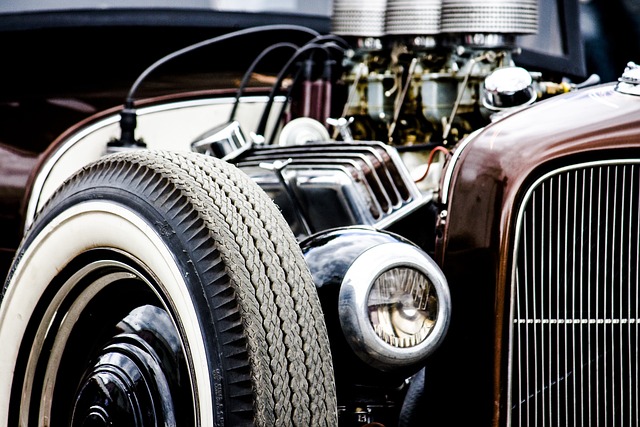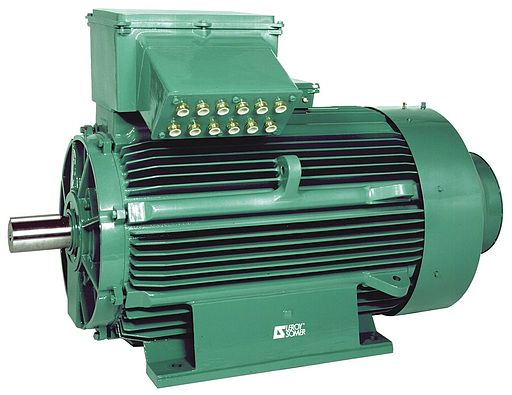Engines typically convert fuel into mechanical energy, while motors convert electrical energy into mechanical energy.
TL;DR Engines Vs. Motors
An engine is typically associated with a device that converts energy into mechanical motion or power, such as an internal combustion engine found in cars. A motor refers to a machine that converts electrical or other forms of energy into mechanical motion.
Engines and motors operate on different principles and have distinct applications. Engines rely on combustion or other chemical reactions to produce power, while motors use electromagnetic fields to generate motion
What is an engine?

An engine is a mechanical device that converts various forms of energy into useful mechanical work. It’s like the beating heart of a machine, pumping power and life into its every function.
Engines come in all shapes and sizes, from the massive engines powering ships and locomotives to the compact ones found under the hoods of cars. They can be fueled by gasoline, diesel, natural gas, or even electricity. Regardless of their size or fuel source, engines are designed to generate power by harnessing chemical reactions or other sources of energy.
Typically composed of multiple components such as cylinders, pistons, valves, and crankshafts – engines use internal combustion (burning fuel inside) or external combustion (burning fuel outside) processes to produce controlled explosions that drive pistons up and down with precision.
What is a motor?

A motor is a device that converts electrical or other forms of energy into mechanical energy. It operates by utilizing the principle of electromagnetism, where electric currents interact with magnetic fields to produce force and motion.
Motors are commonly found in various everyday objects such as appliances, vehicles, and industrial machinery. They play a crucial role in powering these devices and enabling them to perform their intended functions.
There are different types of motors available, including AC motors (alternating current) and DC motors (direct current). AC motors are widely used in household appliances like refrigerators and air conditioners, while DC motors can be found in battery-operated devices such as toys or electric cars.
The main components of a motor include the rotor (the moving part), stator (the stationary part), windings/coils, commutator for DC motors, brushes for contact with the commutator, and bearings for smooth rotation.
When electricity flows through the coils within the motor’s core, it creates an electromagnetic field that interacts with magnets present on either the rotor or stator. This interaction generates rotational motion which powers the machine connected to it.
Engines Vs. Motors – Key differences
| Aspect | Engine | Motor |
|---|---|---|
| Energy Conversion | Converts chemical/thermal energy | Converts electrical energy |
| Types | Internal combustion, steam, etc. | Electric, hydraulic, pneumatic, etc. |
| Fuel/Power Source | Requires fuel (e.g., gasoline) | Requires electricity (e.g., batteries) |
| Combustion | Often involves combustion process | No combustion involved |
| Mechanical Output | Typically rotary motion (crankshaft) | Can provide various types of motion |
| Examples | Car engine, jet engine, steam engine | Electric motor, hydraulic motor, etc. |
| Efficiency | Efficiency can vary | Generally higher efficiency |
| Environmental Impact | May produce emissions and pollution | Typically cleaner and more eco-friendly |
Remember that the term “engine” is often associated with machines that convert thermal or chemical energy into mechanical energy (like the internal combustion engine in a car), while “motor” is typically used for machines that convert electrical energy into mechanical energy (like an electric motor in an appliance). However, language usage can vary depending on context and region.
How do engines and motors work?
Engines
Engines typically refer to devices that convert thermal or chemical energy into mechanical energy. There are different types of engines, including internal combustion engines (like those in cars), steam engines, and more. Here’s how an internal combustion engine, such as a car engine, works:
- Air and Fuel Intake: The engine takes in a mixture of air and fuel (usually gasoline or diesel) into a combustion chamber.
- Compression: The piston inside the cylinder compresses the air-fuel mixture, making it more volatile.
- Ignition: A spark plug ignites the compressed air-fuel mixture, leading to a controlled explosion.
- Expansion: The explosion forces the piston downward, turning the crankshaft, which converts linear motion into rotational motion.
- Exhaust: The spent exhaust gases are expelled from the engine.
This repeated cycle of intake, compression, ignition, and exhaust generates mechanical energy, which is then used to power the vehicle.
Motors
Motors are devices that convert electrical, hydraulic, pneumatic, or other forms of energy into mechanical energy. Electric motors are the most common type. Here’s how an electric motor works:
- Electric Supply: An electric current is supplied to the motor through wires or conductors.
- Magnetic Field: Inside the motor, there are magnets or coils that create a magnetic field.
- Lorentz Force: When electric current flows through the coil in the presence of the magnetic field, it creates a force called the Lorentz force.
- Rotor Movement: The Lorentz force causes the rotor (the part that rotates) to turn.
- Mechanical Output: The rotational motion of the rotor is used to perform work, such as turning a fan blade, driving a conveyor belt, or spinning the wheels of an electric vehicle.
Electric motors are highly efficient and versatile, making them suitable for a wide range of applications.
Engines primarily involve the combustion of fuel to produce mechanical energy, while motors use electrical or other forms of energy to generate mechanical motion through the interaction of magnetic fields and electric currents. The specific design and operation can vary significantly depending on the type of engine or motor and its intended use.
Image Credits
Featured Image By – Hebi B. from Pixabay
Image 1 By – Thomas Rüdesheim from Pixabay
Image 2 By – Egzon123, CC BY-SA 3.0 , via Wikimedia Commons








